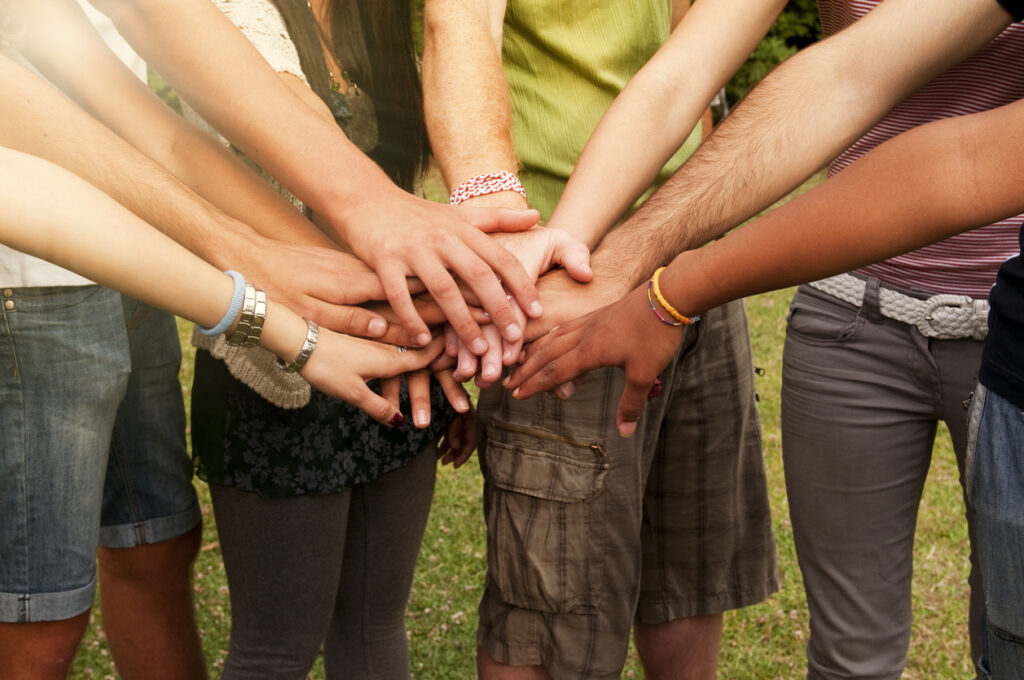It’s been proven that individuals and teams perform best in environments where they feel a sense of belonging. Leadership teams should be doing everything they can to help encourage this.
A mountain of research spanning almost 200 years and looking across multiple cultures and contexts demonstrates beyond doubt that the single biggest predictor of our health, happiness and longevity is our sense of connectedness to one another.
More than genetics, diet, exercise, choice of career, or even where we live, what sustains us as individuals is not a factor that pertains to us as individuals at all – it is about community. We need to feel connected to each other. We need to feel, in other words, as though we belong.
In a work context, our sense of belonging is rooted in a myriad of small things – the building we turn up at every day, our walk from the station to get there, the name on our headed notepaper, the people around us who know that we get grumpy when Spurs lose. It’s in the traditions of the annual Christmas party through to the jargon and acronyms we use.
Three areas of focus
In my experience, there are broadly three areas to focus on when it comes to of engendering a sense of belonging:
- Building connectedness and relationships.
- Creating an environment in terms of physical surroundings and daily routine in which people feel safe and authentic and can thrive.
- Building identity, for individuals, teams and the organisation as a whole.
Connectedness and relationships
A company’s particular context, scale and history will determine how structured it should be in its approach to encouraging relationship building. If there is a particular need to fast-track relationship building – for example upon merger, or following a restructuring, a few ‘set piece’ events can help.
Quizzes, speed-dating, breakfasts, seminars, flash mob choirs, sports, volunteering, sounding boards and think tanks, team-building weekends away, hiking trips, workshops on resilience – these can be designed to appeal to as broad a group as possible, to draw people in, and to begin to create a sense of belonging.
This sort of structured approach does not, of course, speak to the quality of any of the interactions, but at least it establishes a bedrock of a relationship which can be built upon later, and also helps to ensure that everyone is included, with nobody feeling overlooked or sidelined.
It is important to look at systems and processes people use every day. An inability to engage with a particular system or process can quickly lead to feelings of isolation, and to a perceived threat.
Every organisation will want to consider what sort of interactions work best for them – there is no single right answer, and no shortage of possibilities.
In any scenario, though, all of this involves lots and lots of face time – inefficient, repetitive and expensive, particularly if you are dealing with teams who operate across geographies and markets. It can feel forced, time-consuming and awkward, but it absolutely always pays off.
There really is no substitute for having people meet one another face-to-face and find their common ground.
All of us want to feel as though we’re not alone, and in my experience, there is no better way to build a sense of belonging to a firm, and ‘esprit de corps’ between colleagues, than by finding opportunities for them to come together.
Home sweet home
Relating to the second point above is a focus on the physical environment, the everyday experience – what does it actually feel like to turn up at work each day, and do your job? The physical environment can be a powerful factor in helping to establish a sense of belonging, and little details can make a huge difference.
As human animals we feel safer when our surroundings are familiar, happier when they are light and pleasant and better able, as a very practical matter, to build relationships and community when we can actually find our tribe.
It is also important to look at systems and processes people use every day. An inability to engage with a particular system or process can quickly lead to feelings of isolation, and to a perceived threat.
By building competence and confidence through readily available help and training and also giving staff a voice to influence and shape these processes and systems, a company can convey to people that they matter and that their organisation cares about them while building buy-in and a sense of collective identity.
Individual identity
The third area to focus on, in terms of engendering a sense of belonging, is to encourage and enable the development of a keen sense of identity for both an organisation and its component parts.
This can be complex in all but the smallest companies, as you might well want teams to have a lot of autonomy and the space to develop their own distinct culture, vibe and market position but also need the firm to develop an overarching sense of identity.
In 1992, Robin Dunbar, the anthropologist and evolutionary biologist, published the findings of a piece of research which correctly predicted social group size across dozens of species of primates, based on the size of the neocortex. Extending this principle to human primates, he predicted that the largest effective group size amongst humans is around 150 people – this became known as Dunbar’s Number.
Engendering a deep sense of belonging is absolutely vital for individual wellbeing and corporate performance, particularly during periods of profound change or uncertainty.
This means that if people are to establish a clear sense of group identity within a large organisation, they are much more likely to identify first and foremost with a sub-group within the organisation, rather than with the organisation as a whole. This is to be actively encouraged.
For many their primary ‘tribal home’ will be the team that they physically sit beside and work with day to day.
Visual and environmental factors like office décor and design help with this, and so too do the myriad of ‘ways we do things around here’ – weekly newsletters, banging a gong to celebrate success, going for burritos together on a Thursday lunch-time, etc.
Corporate identity
At the wider organisational level, identity is closely linked to brand, and while this is best thought of as an inside-out relationship where identity drives brand, it is also true that positive press coverage, strong performance in league tables, glossy adverts all contribute to building a sense of identity.
There is also a leadership and governance angle to consider.
The most senior leaders and the board in a company have a key part to play shaping, articulating and role-modelling a common sense of identity for an organisation.
The language this group uses – e.g. ‘we’ not ‘them’, ‘future’ not ‘past’, ‘hope’ not ‘loss’ – the stories they tell about what they witness happening in the here and now, and the priorities they set . . . all of these have a profound influence on how an organisation shows up and how it thinks and talks about itself.
Underpinning all of this, though – the events, the advertising, the inspirational leadership and the stories – must be a common purpose, and shared values.
An organisation’s identity rests on what it is here to do and how it will do it.
Conclusion
Engendering a deep sense of belonging is absolutely vital for individual wellbeing and corporate performance, particularly during periods of profound change or uncertainty that might otherwise pose a threat to our sense of self and safety.
By focusing on relationships, environment and identity, leaders can enable their people and their organisations to thrive.
Leading for Organisational Change – Building Purpose, Motivation and Belonging by Jennifer Emery is published by Wiley and available now.
Want to learn more? Read Psychological safety: how supportive teams enable innovation.







